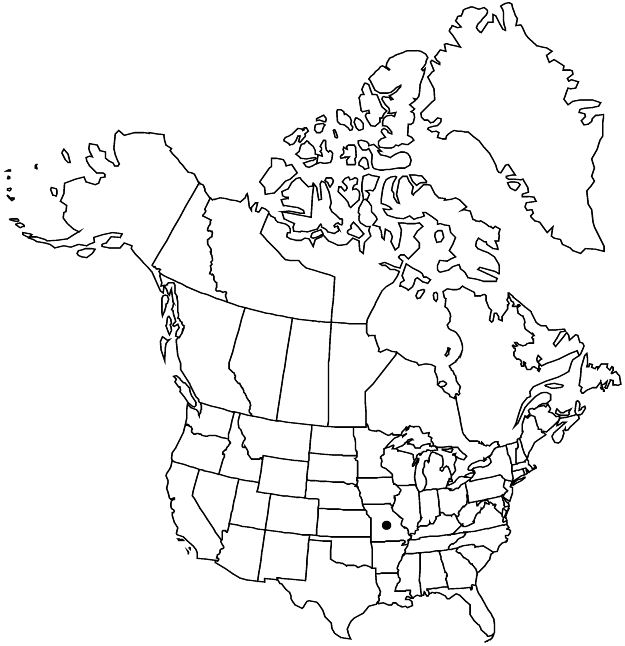Difference between revisions of "Crataegus collina var. sordida"
Rhodora 10: 76. 1908.
FNA>Volume Importer |
FNA>Volume Importer |
||
| Line 14: | Line 14: | ||
|label=Endemic | |label=Endemic | ||
}} | }} | ||
| − | |basionyms={{Treatment/ID/ | + | |basionyms={{Treatment/ID/Basionym |
|name=Crataegus sordida | |name=Crataegus sordida | ||
|authority=Sargent | |authority=Sargent | ||
| + | |publication_title=Bot. Gaz. | ||
| + | |publication_place=33: 114. 1902 | ||
}} | }} | ||
|synonyms= | |synonyms= | ||
| Line 35: | Line 37: | ||
|discussion=<p>Of conservation concern.</p><!-- | |discussion=<p>Of conservation concern.</p><!-- | ||
--><p>Variety sordida is rare in southern Missouri.</p><!-- | --><p>Variety sordida is rare in southern Missouri.</p><!-- | ||
| − | --><p>B. F. Bush noted on a herbarium label that <i></i>var.<i> sordida</i> flowered later and had larger flowers than sympatric <i>Crataegus collina</i>, assumed to be <i></i>var.<i> collina</i>. The bracteoles of <i></i>var.<i> sordida</i> are particularly narrow (20:1). Variety sordida has not been recorded since the early 1900s.</p> | + | --><p>B. F. Bush noted on a herbarium label that <i></i></i>var.<i><i> sordida</i> flowered later and had larger flowers than sympatric <i>Crataegus collina</i>, assumed to be <i></i></i>var.<i><i> collina</i>. The bracteoles of <i></i></i>var.<i><i> sordida</i> are particularly narrow (20:1). Variety sordida has not been recorded since the early 1900s.</p> |
|tables= | |tables= | ||
|references= | |references= | ||
| Line 59: | Line 61: | ||
|publication year=1908 | |publication year=1908 | ||
|special status=Conservation concern;Endemic | |special status=Conservation concern;Endemic | ||
| − | |source xml=https://jpend@bitbucket.org/aafc-mbb/fna-data-curation.git/src/ | + | |source xml=https://jpend@bitbucket.org/aafc-mbb/fna-data-curation.git/src/f6b125a955440c0872999024f038d74684f65921/coarse_grained_fna_xml/V9/V9_920.xml |
|subfamily=Rosaceae subfam. Amygdaloideae | |subfamily=Rosaceae subfam. Amygdaloideae | ||
|tribe=Rosaceae tribe Gillenieae | |tribe=Rosaceae tribe Gillenieae | ||
Revision as of 20:39, 24 September 2019
Leaf blades ± obtrullate, 3.5–5 cm, 1/2 grown at anthesis, length/width = 1.4–1.5, subcoriaceous, lobes 0 or 1–3 per side, max LII 15%, lobe apex acute, margins serrate distally, teeth 1.5 mm, apex subacute to acute, adaxial surface matte to sublustrous young, with short, scattered, caducous hairs. Inflorescence branches sparsely pubescent. Flowers 15(–20) mm diam.; stamens 20, anthers rose.
Phenology: Flowering Apr; fruiting Sep–Nov.
Habitat: Brush, open woodlands
Elevation: 100–200 m
Discussion
Of conservation concern.
Variety sordida is rare in southern Missouri.
B. F. Bush noted on a herbarium label that var. sordida flowered later and had larger flowers than sympatric Crataegus collina, assumed to be var. collina. The bracteoles of var. sordida are particularly narrow (20:1). Variety sordida has not been recorded since the early 1900s.
Selected References
None.
